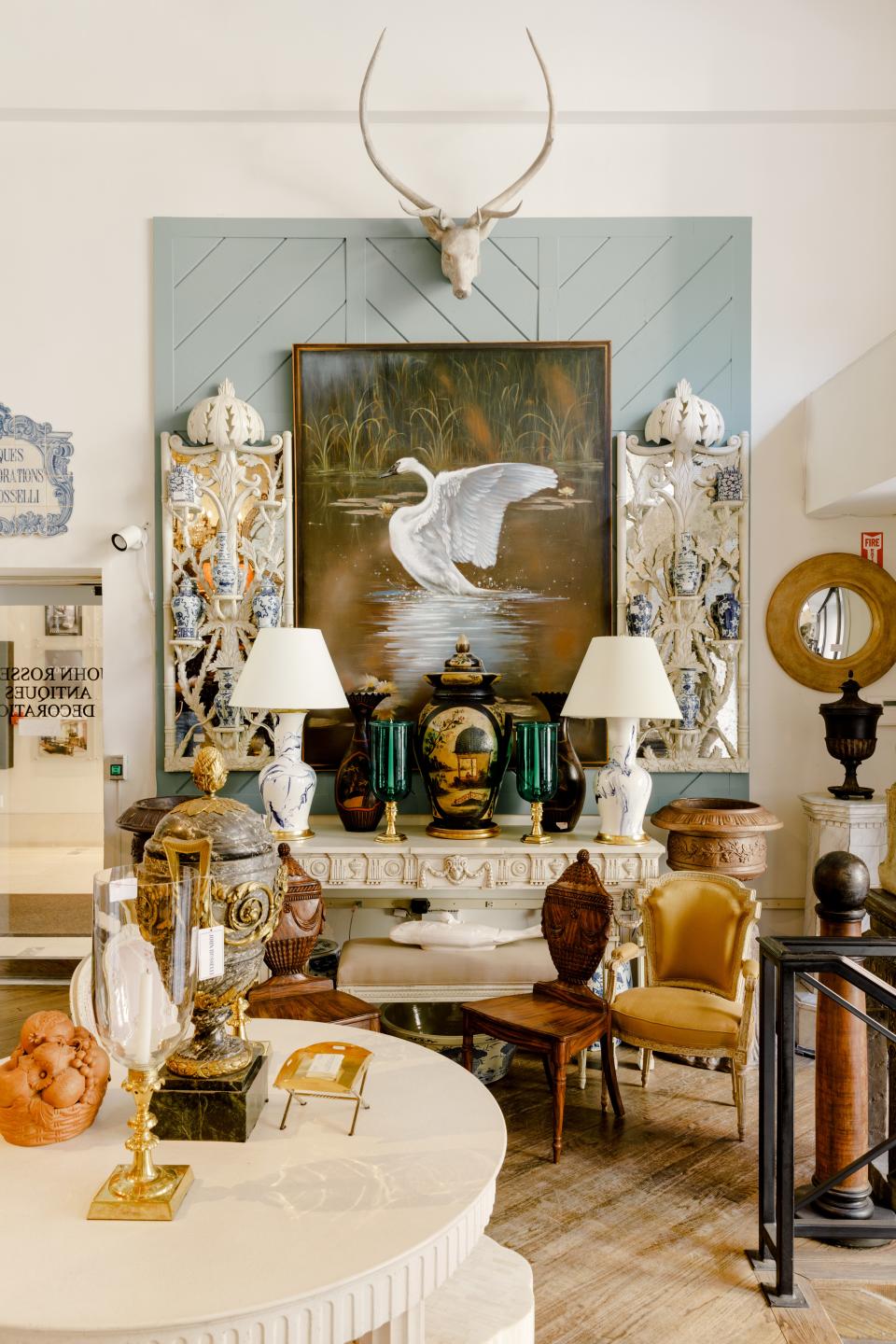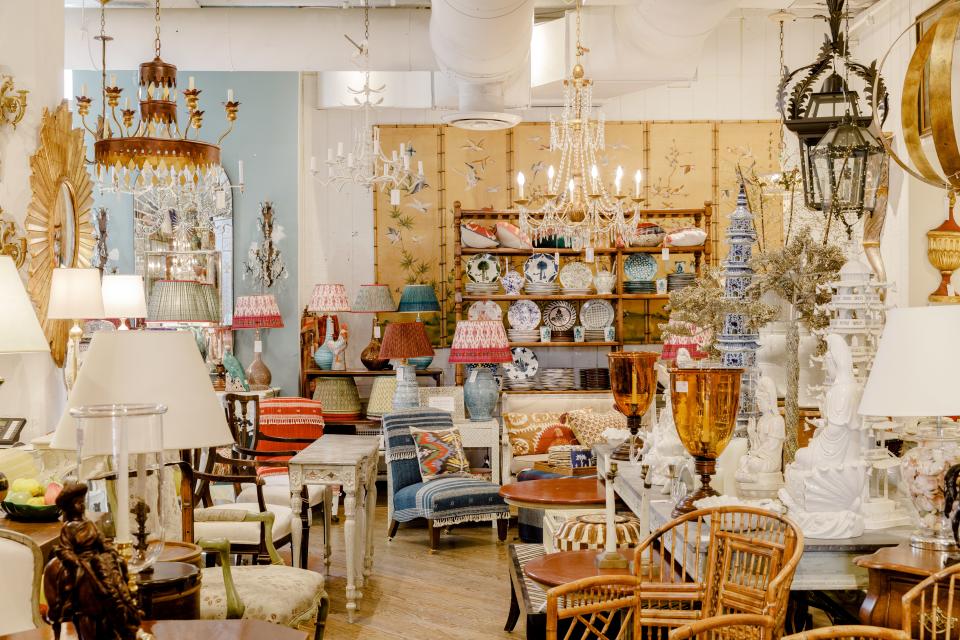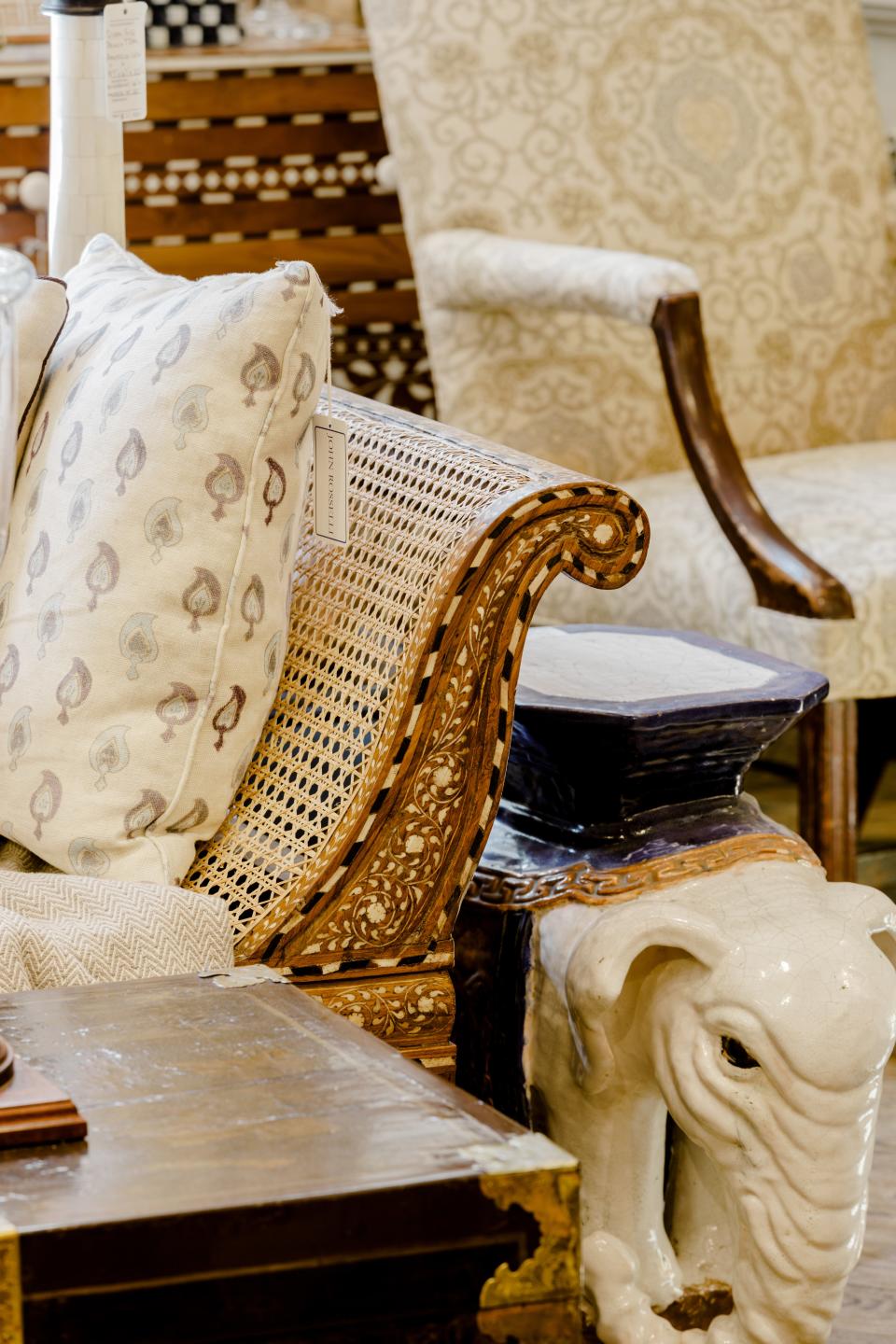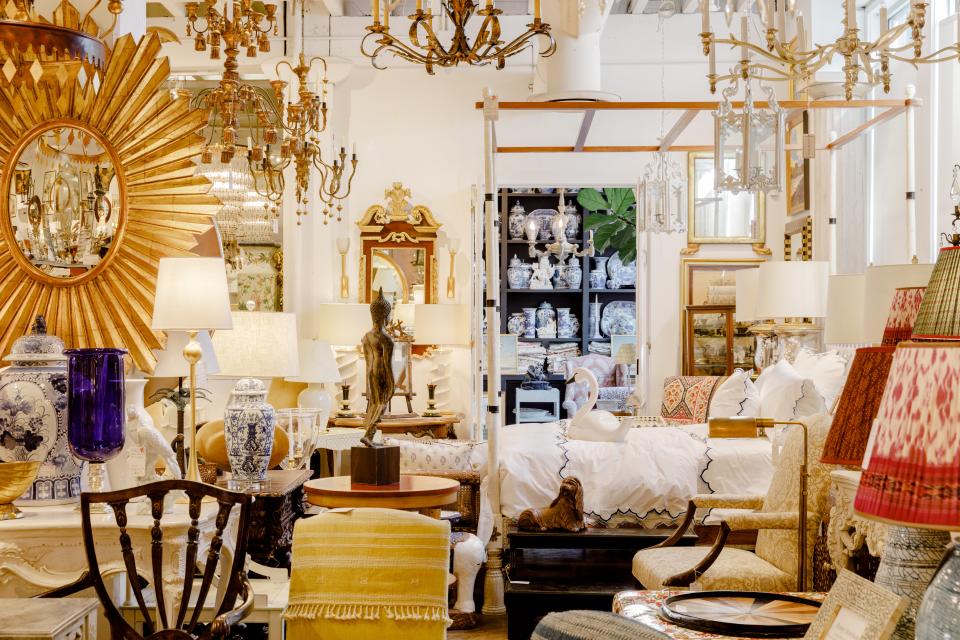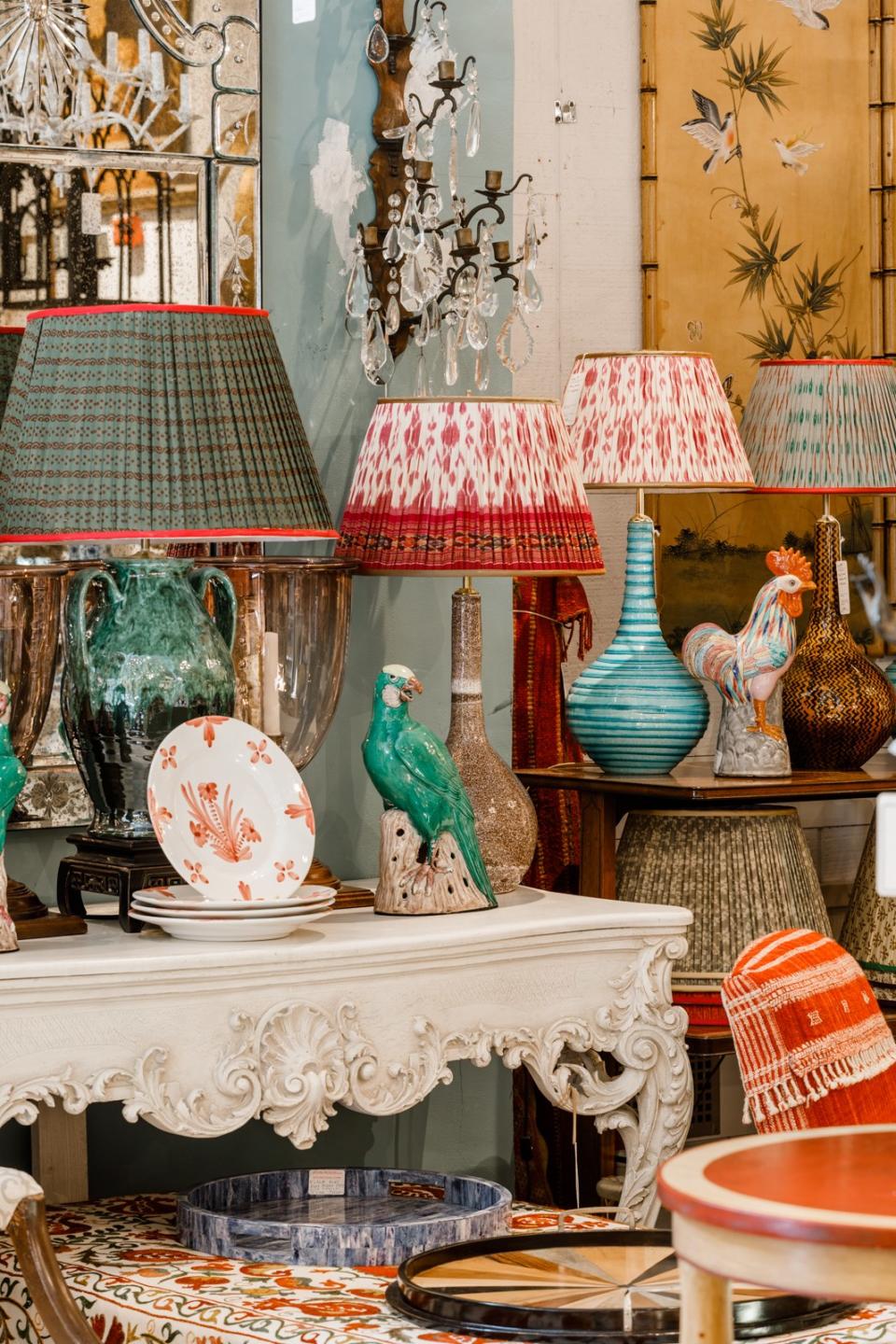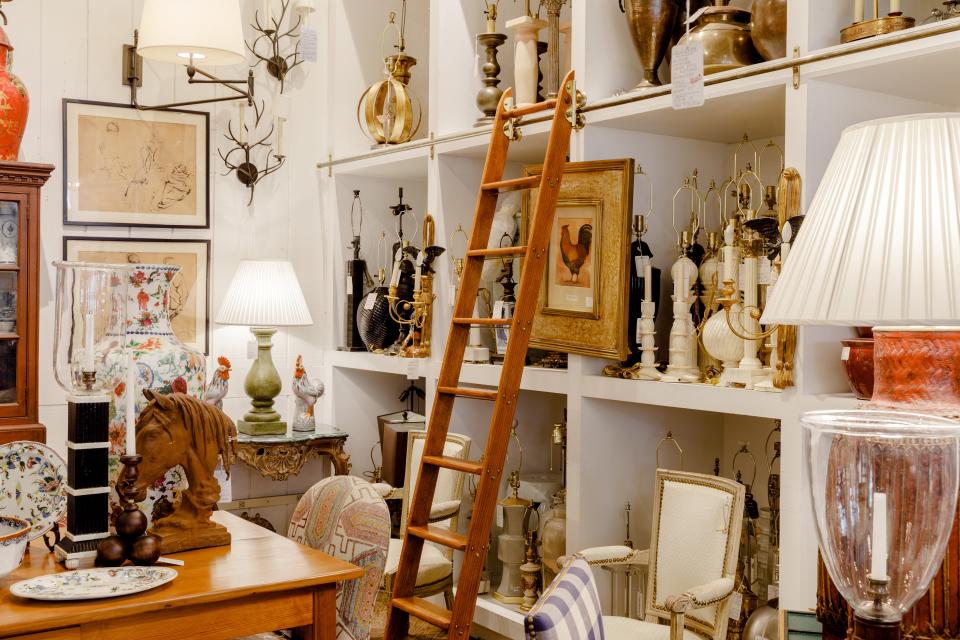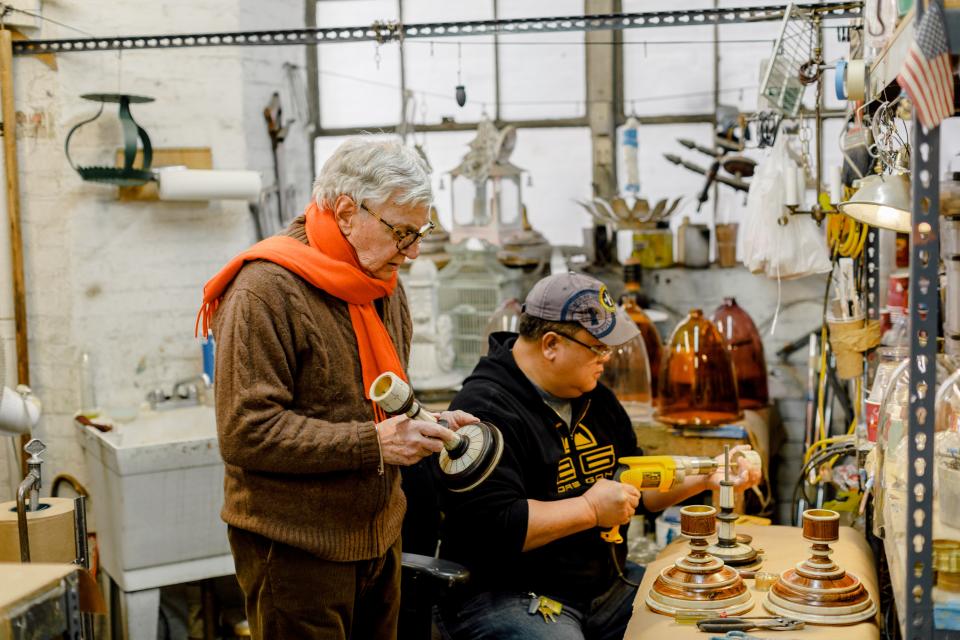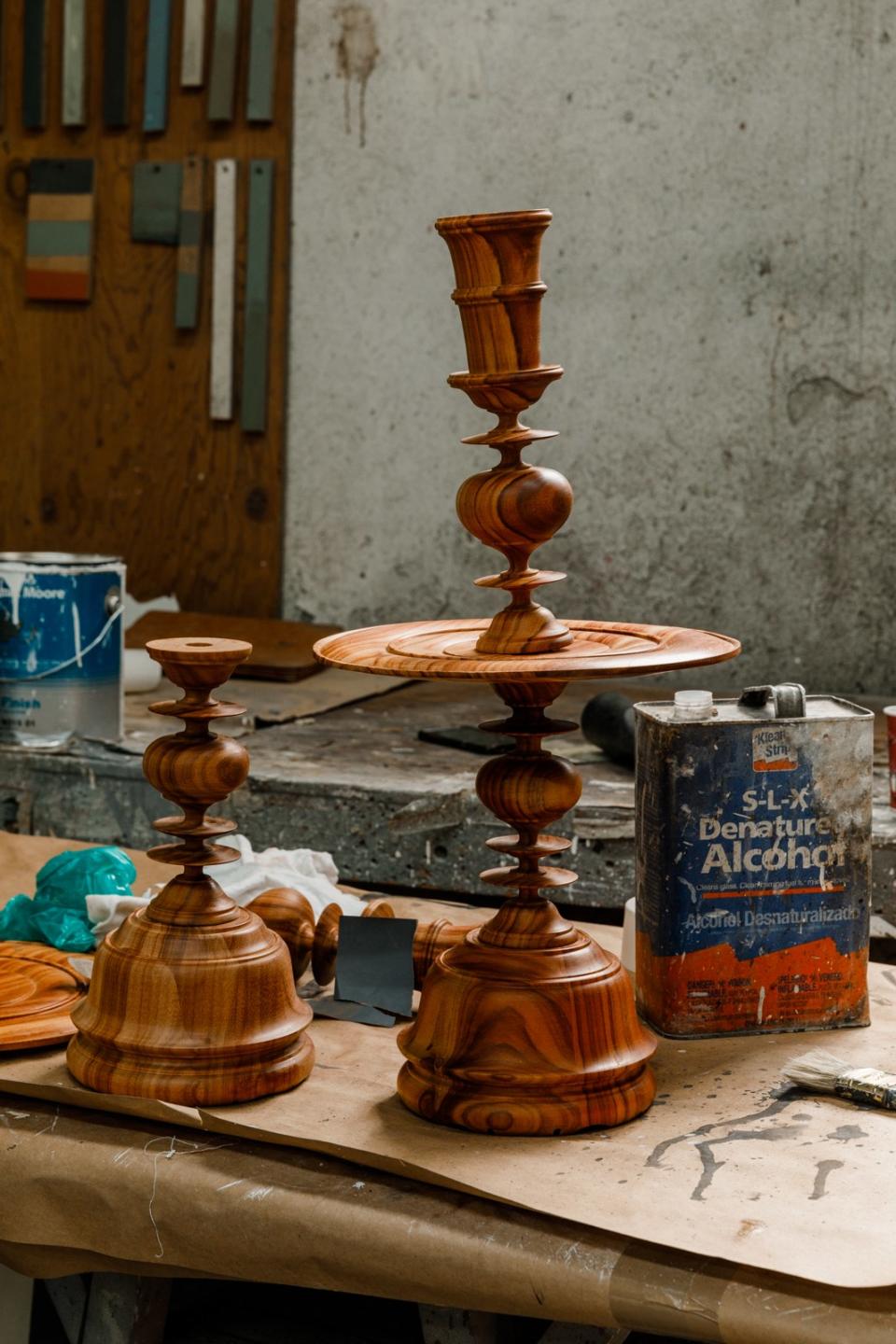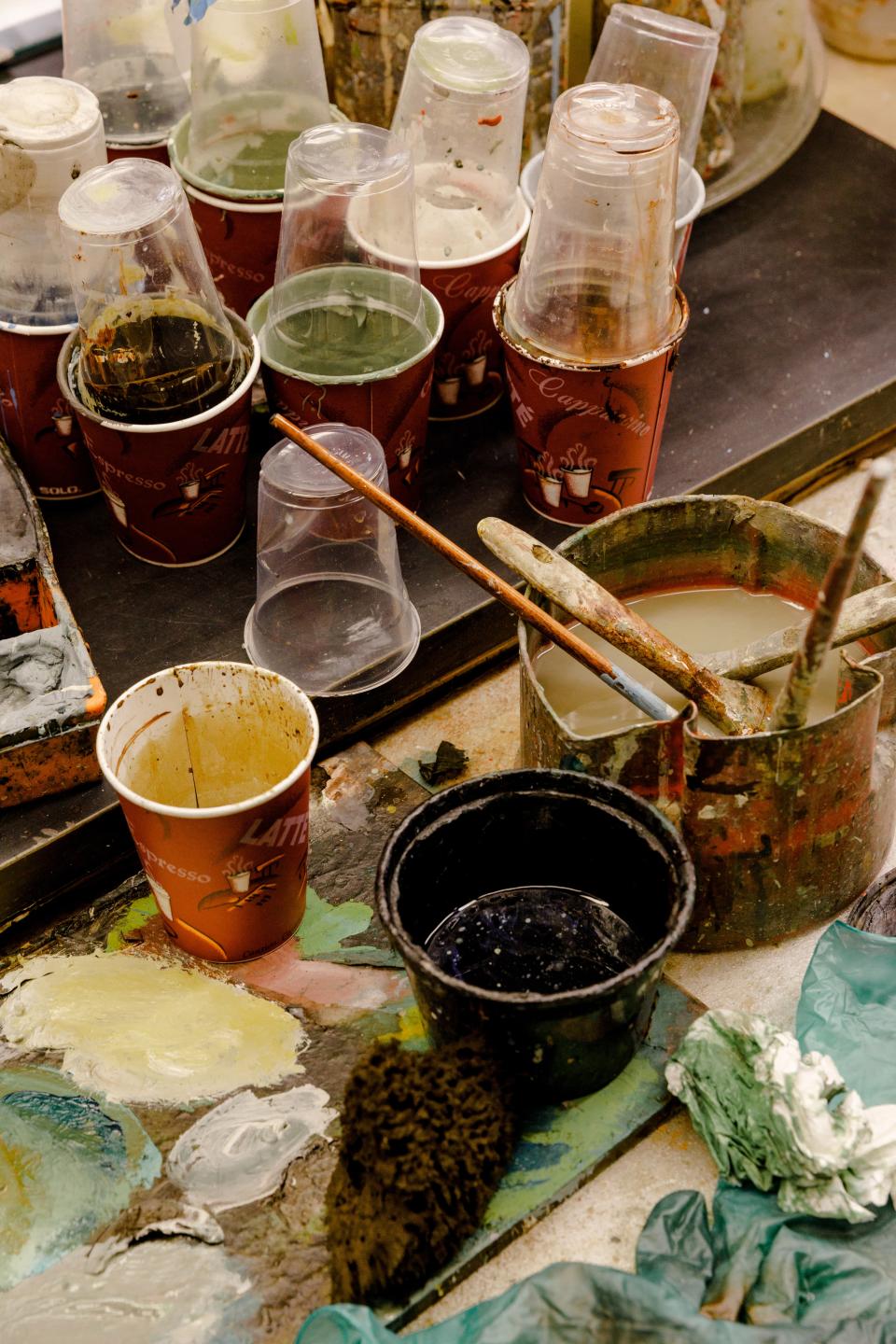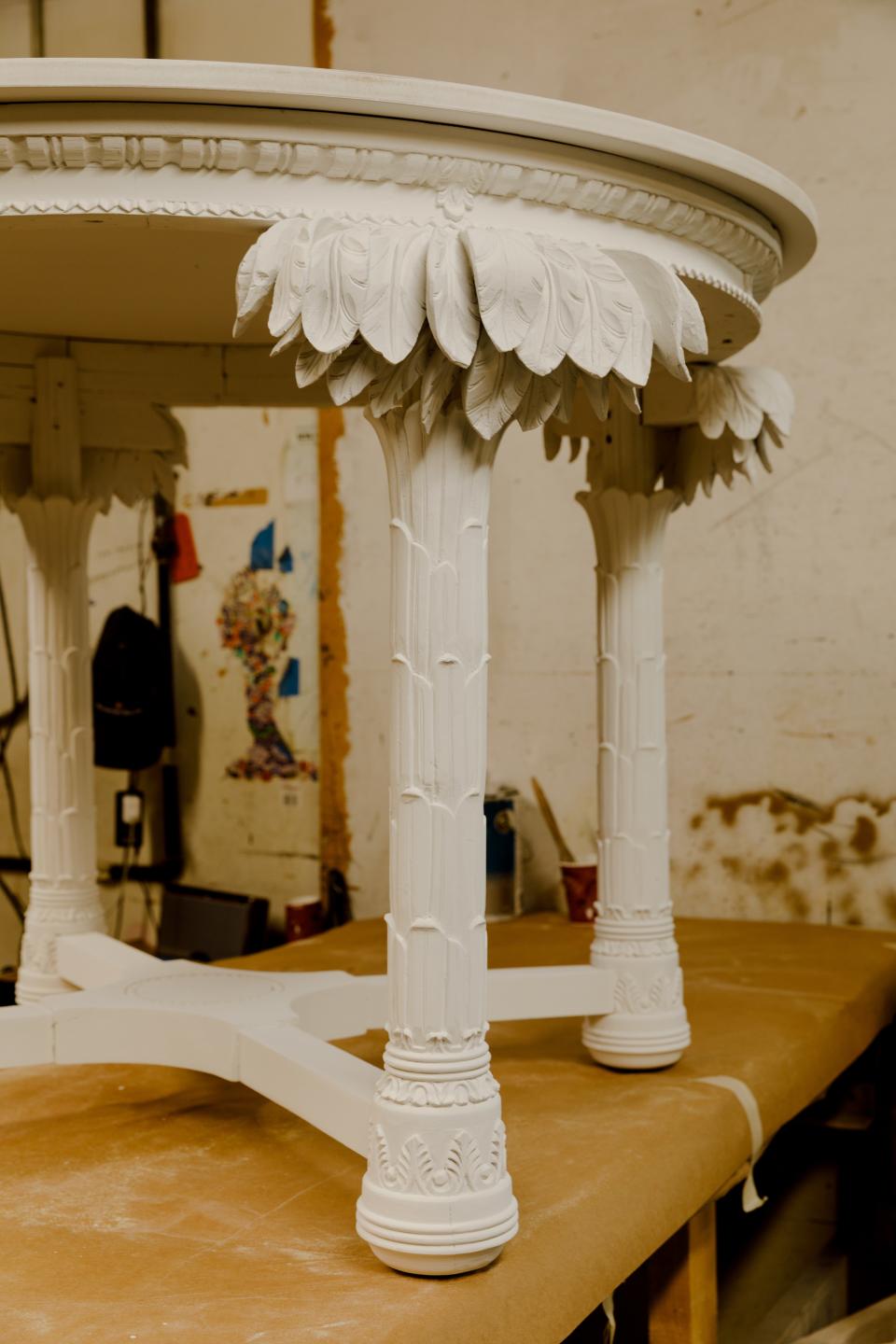John Rosselli’s Life and Studio Is a Cabinet of Curiosities
“I fell in love with Penn Station,” says John Rosselli. “It was built all in travertine, a river stone that comes from the Tiber. It’s beige and pitted and creamy. ”
Rosselli’s Penn Station is in a different New York, in the 1960s, a time the legendary antiques dealer had his first shop and Robert Moses still ran the world. “Most of its marble ended up in a landfill in New Jersey. They’re still finding column caps,” he says. We’re in Rosselli’s Third Avenue showroom—a unique mausoleum for Chinoise and chaises—talking about a New York that no longer exists. But we’re really talking about taste.
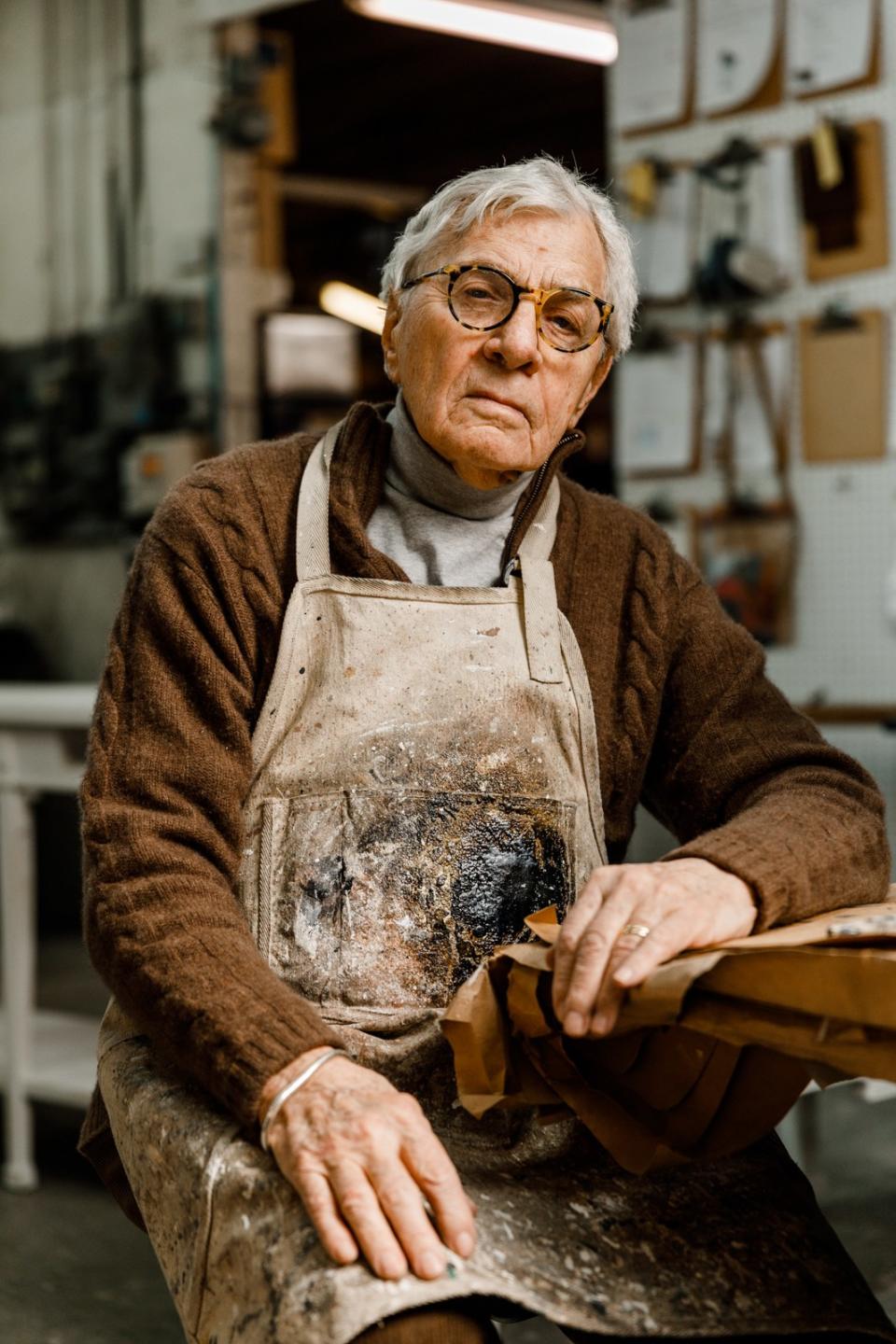
“The market has changed. No question,” he says. “Most young people don’t want the furniture that their parents had. But taking that Sheraton chest and putting an abstract painting above it—it gives a sense of elegance to a room.”
There is no shortage of such objects in Rosselli’s showroom; the volume of 18th century furniture alone could make a Bourbon queen lose her head. In the middle of showing me a particularly fetching slipper chair he becomes distracted by some custom fabric lamp shades, by the English maker Penny Morrison. It’s a heavenly mix— a contrarian crush of the old and new, blessed by a collector’s eye. “I understand minimalism,” he says. “It’s not me.”
Born in 1932 to an Italian immigrant family, Rosselli grew up in northwestern New Jersey, in the town of Newton, the youngest of 14 children. His father, a farmer who owned his own wholesale grocery business, came to the U.S. in 1890 when he was eight years old. When he was a teenager, Rosselli tried the Pratt Institute, but when the school bored him, he opted to work for $65 per week for an import company, run by a few of his father’s friends.
“Most of the furniture from Italy would snap and break,” Rosselli says. “It was called ‘Blitz’ furniture because it came from buildings that had been bombed.” Gradually, he learned the intricacies of repairing and painting furniture, giving the broken articles a new life. After three years, in lieu of a raise, the men he worked for—“Venetian and Jewish and mostly refugees,” he says—began to give him furniture. Soon Rosselli had enough to open his own store at Second Avenue and 68th Street.
It was the beginning of a furniture empire—showrooms in three cities, product lines, and distribution deals—that today not only inhabits a good deal of Park Avenue, but helps define it.
“The world has almost forgotten about wooden mahogany furniture, which can be very beautiful, and the older it gets, the prettier it gets," he says relaxing into, and nearly becoming a part of, a red wingback armchair.
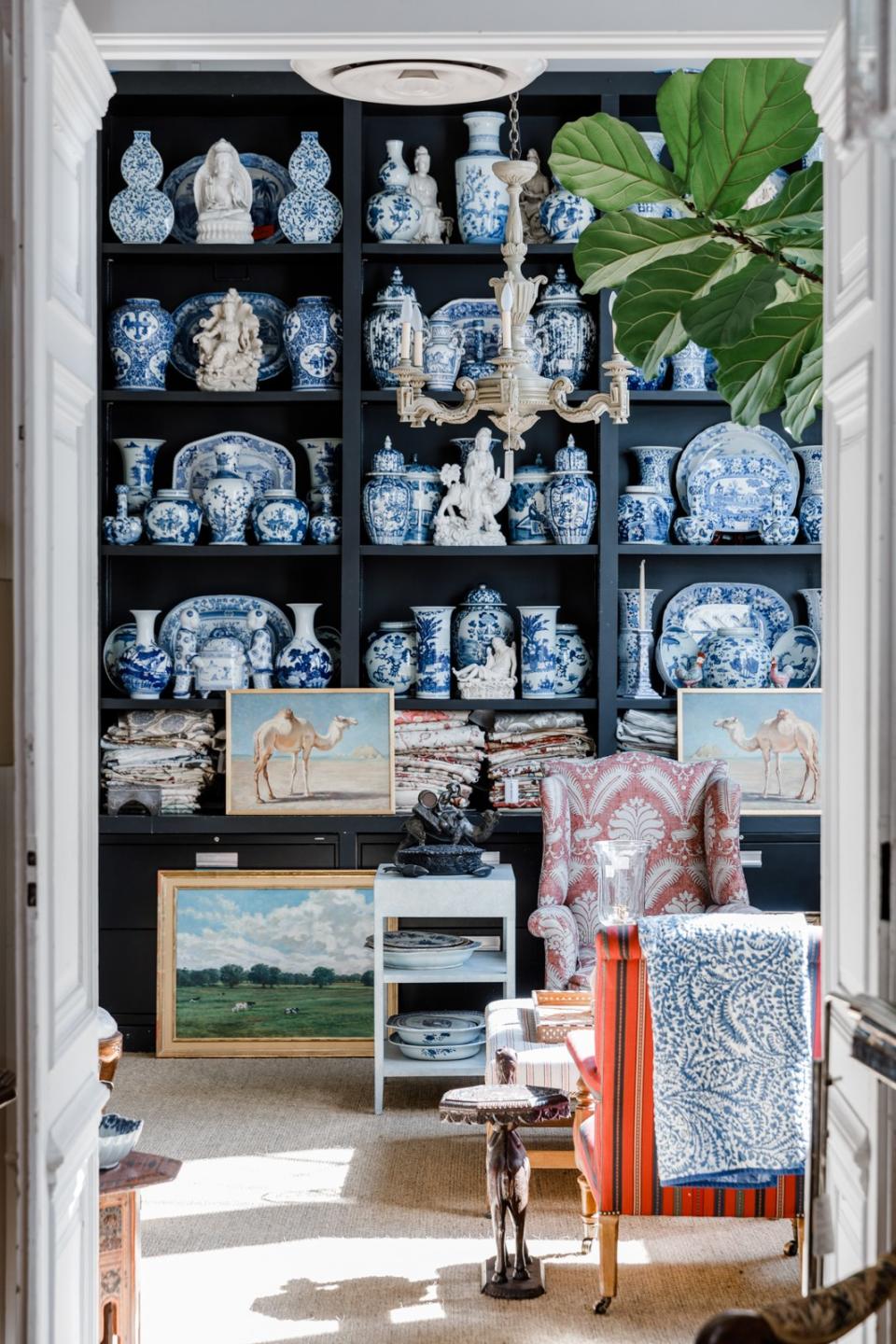
Rosselli has had his present-day showroom for 25 years. It abounds with blue-and-white porcelain—his mother had a set—though his special love is boxes: “There’s a decorative quality. You put a box on the coffee table with a few books and bowl of flowers. That’s all it needs,” he says. One box is made of bone, with no cover. Another of horn. One is shaped peculiarly, like a bisected gourd. “In India [and throughout Asia] they chew betel nuts,” he tells me. “This is where they’d store them.”
He takes me into a back room. I find myself confounded by, and drawn to, a porcelain rhino—the size of a small cat—porting an obelisk. He tells me it’s from the 19th century, and most likely German. On the wall, there’s a rather scandalous turn-of-the-century Chinese drawing. Two lovers copulate on a floor, beneath some curtains with suspiciously phallic swirls. The recipient is reading a book mid-action. Good for her.
Today, a great deal of Rosselli’s business is selling the 18th-century reproductions, which he imports or makes in his workshop uptown; the market simply can’t offer the real thing. He has a warehouse full of objects to draw from, and a workshop on 119th Street with eight makers who restore tables and paint chinoiseries. Then there’s a showroom in Chicago, a shop in Washington, D.C., and a shop in Florida. “I confess,” he says. "I'm still buying the same merchandise. Classicism is something you live with.”
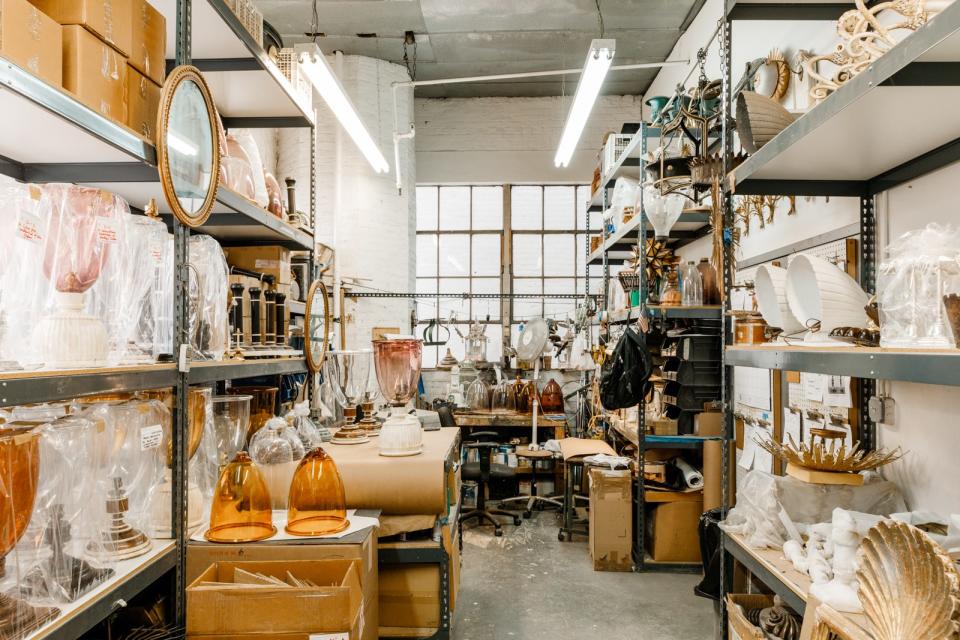
In 1952, when he opened his second store, in the East 50s, the Third Avenue elevated line was his conduit. “It was a trip in itself, to ride above the city on the subway,” he says. “There was nothing but antique shops and Irish bars. At night it was completely different: There were hookers and four or five gay bars at the time. The world was kinder then, or it seemed.”
The shop was a hit. “The magazines at the time would work with decorators, and when they were ready to finish a job, they would come to me for accessories and decoration,” he says. “I became well-known though the magazine world, never having to buy an ad.” Eventually, he moved his shop to 72nd Street and Second Avenue, where it stood for 30 years.
One afternoon, Françoise de la Renta came by the shop with a friend. “This woman steps forward with a sweater tied around her neck and says, ‘Hi, I’m Babe Paley’. We had a wonderful working relationship,” he says. “She shopped 12 months of the year.” Once, he came back from England with a palm tree—two feet tall—made entirely of ivory (ivory can no longer be sold or traded in most countries). “The moment she saw it, she said, ‘Oh, my god: That’s for Truman [Capote]. The perfect present for him.”
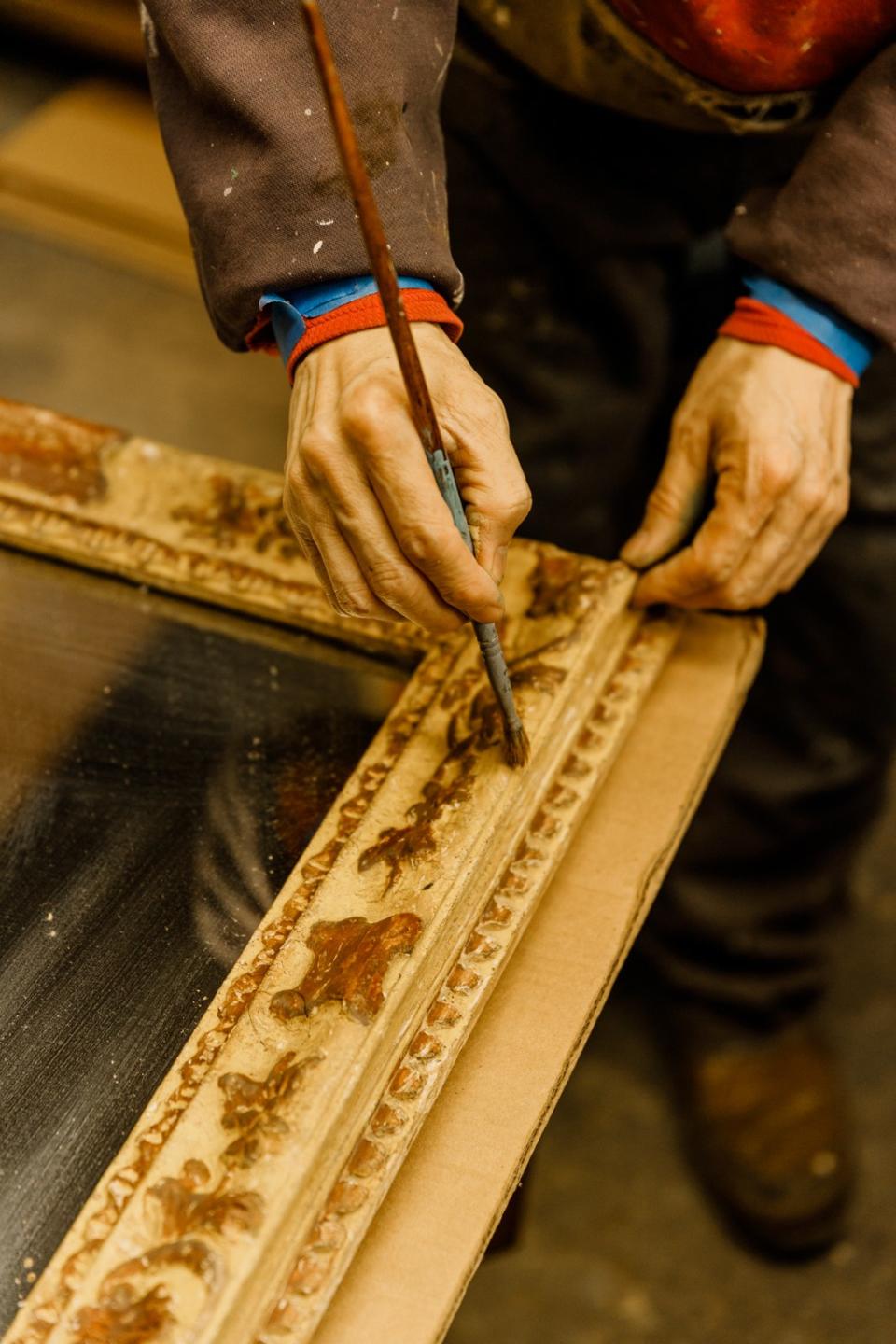
Around the same time, he met the woman who would become his wife: the legendary designer Bunny Williams. At a cocktail party—he in his 40s, she in her 20s—they decided to visit London’s Chelsea flower show together. It inspired them to open Treillage (it closed in 2015) on 75th Street, their outdoor decoration destination. It was the beginning of a partnership that has included businesses, a marriage, and some legendary houses.
Closest to Rosselli’s heart is their villa in the Dominican Republic, which you can visit in Williams’ book, A House by the Sea. I lose him for a good 30 minutes while he remembers this home through its furniture. “I had a painter do the four panes on the dining room ceiling that were about nine feet tall, of exotic birds. Bunny had two huge frames, almost eight feet tall, which she did as rococo mirrors in the middle of the room, painted white. And all our upholstery was done in blue linen,” he says. He describes endlessly enchanting dinners, ornamented with Williams’s centerpieces, a beach beneath the cliffs below them, and 20 years of memories with their neighbors and great friends, the de la Rentas and Julio Iglesias. It sounds like heaven.
A few years ago, they decided it was time to go. They sold the place, on the condition the buyer keep the staff, their dogs, and all of their belongings—the china, his collection of beds, the libraries, the upholstery—which they decided to say goodbye to as well. “We left with five cases of clothes. The shipping bill was something like $4,000,” he says. But that chapter was now closed. “Oscar is gone. Julio is in his 80s. Most of our friends are older now,” Rosselli reflects.
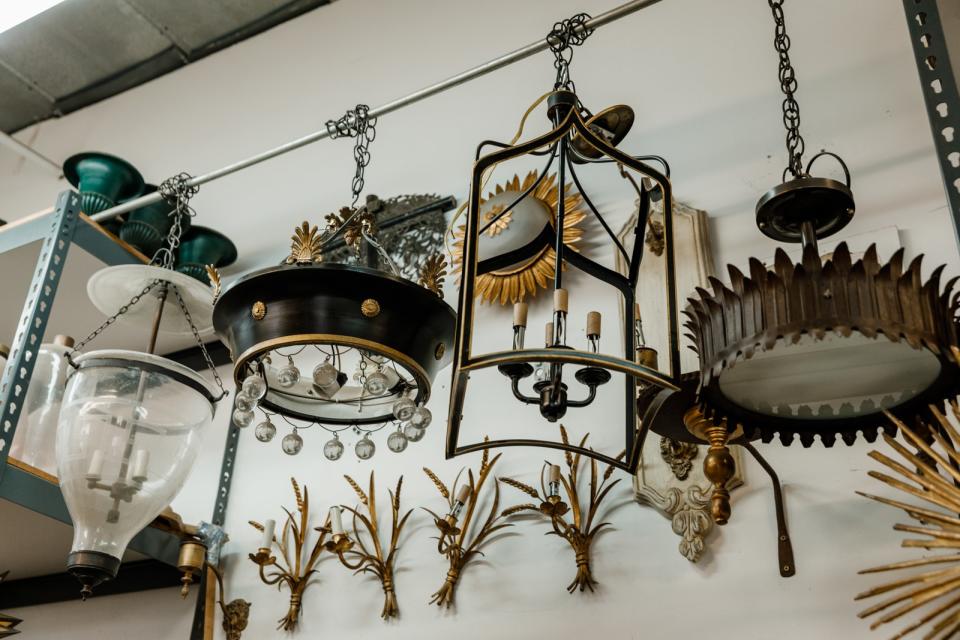
For a man so intimately involved in the age of things, Rosselli is not so concrete on his own. “[I’m] 87 or 88, or something like that,” he says. His focus is the same as it ever was: on acquiring old, beautiful things. “I buy every day. I go to the antique markets. I go to two or three auctions a week.”
It’s difficult to tell whether that’s appreciated. The decorators of today—whom he is not unkind to—are a different breed. “Most decorators today don’t like to shop. I get calls saying, ‘Send a picture of every mirror you have.’ It takes the joy out of it.” So he doesn’t do it. And who can blame him? The notion of this man, this elegant man, reducing all his experience, his life’s work, to a JPEG, is laughable.
At the same time, in a way, he’s less connected to his objects than ever. When he retires, he’ll them go. “I’m about to sign a lease [for my shop] for five years. Then I’ll be in my 90s. Then I’ll have one big auction sale.”
Is there anything he won’t be able to part with?
“There’s not much. A few very special things. A collection of ivory you can’t sell,” he says. “Candlesticks. Boxes. Buildings. People.”
Inside John Rosselli's New York Showroom and Studio
